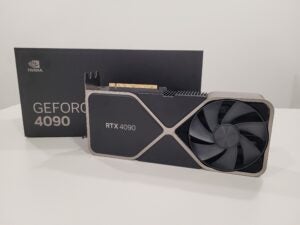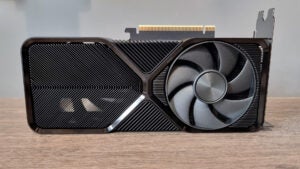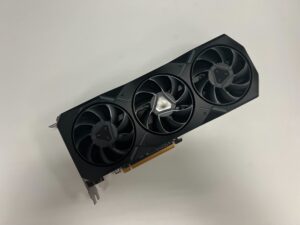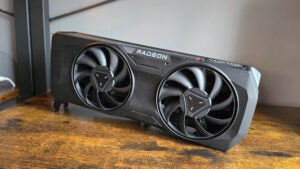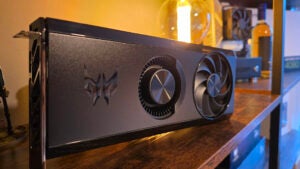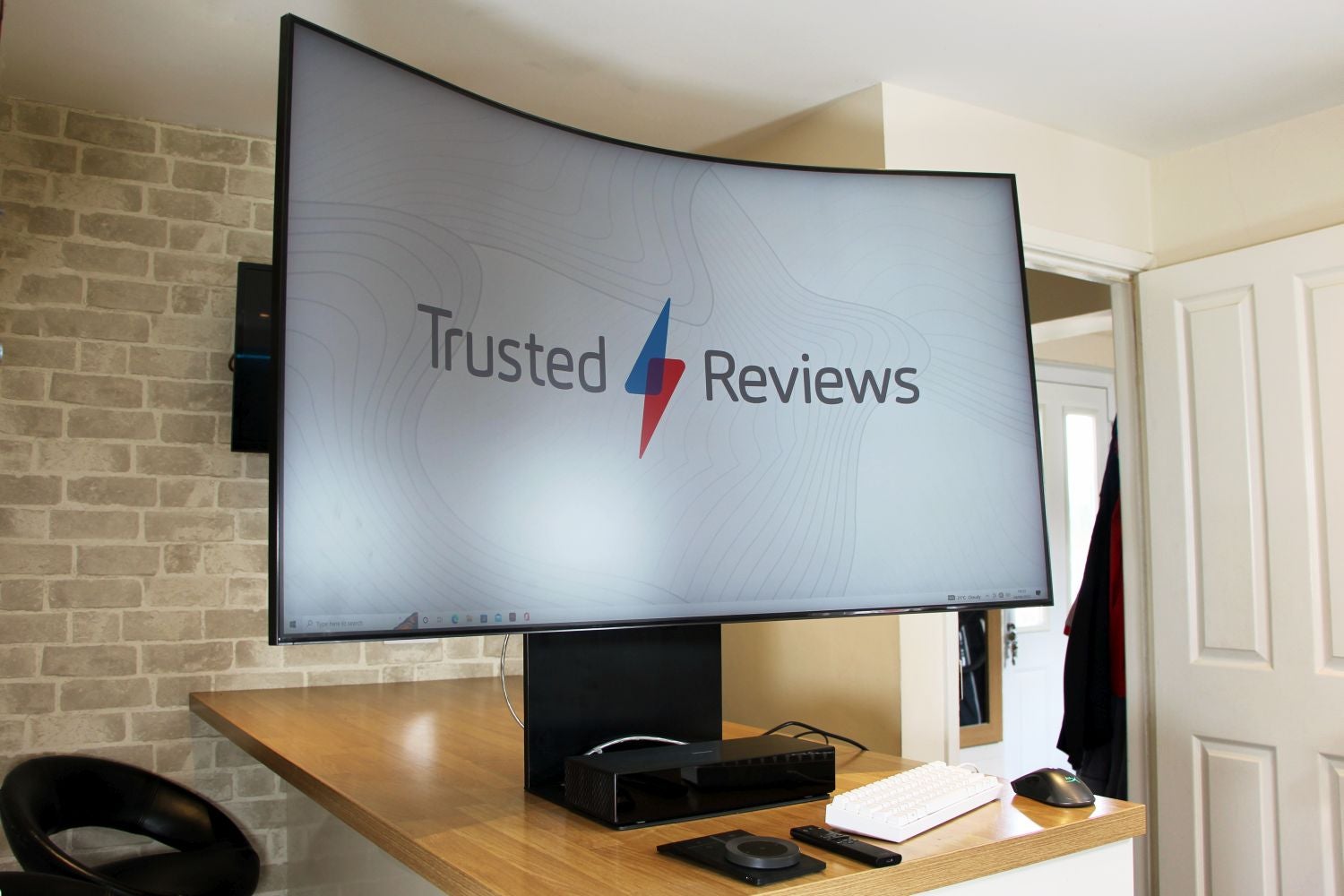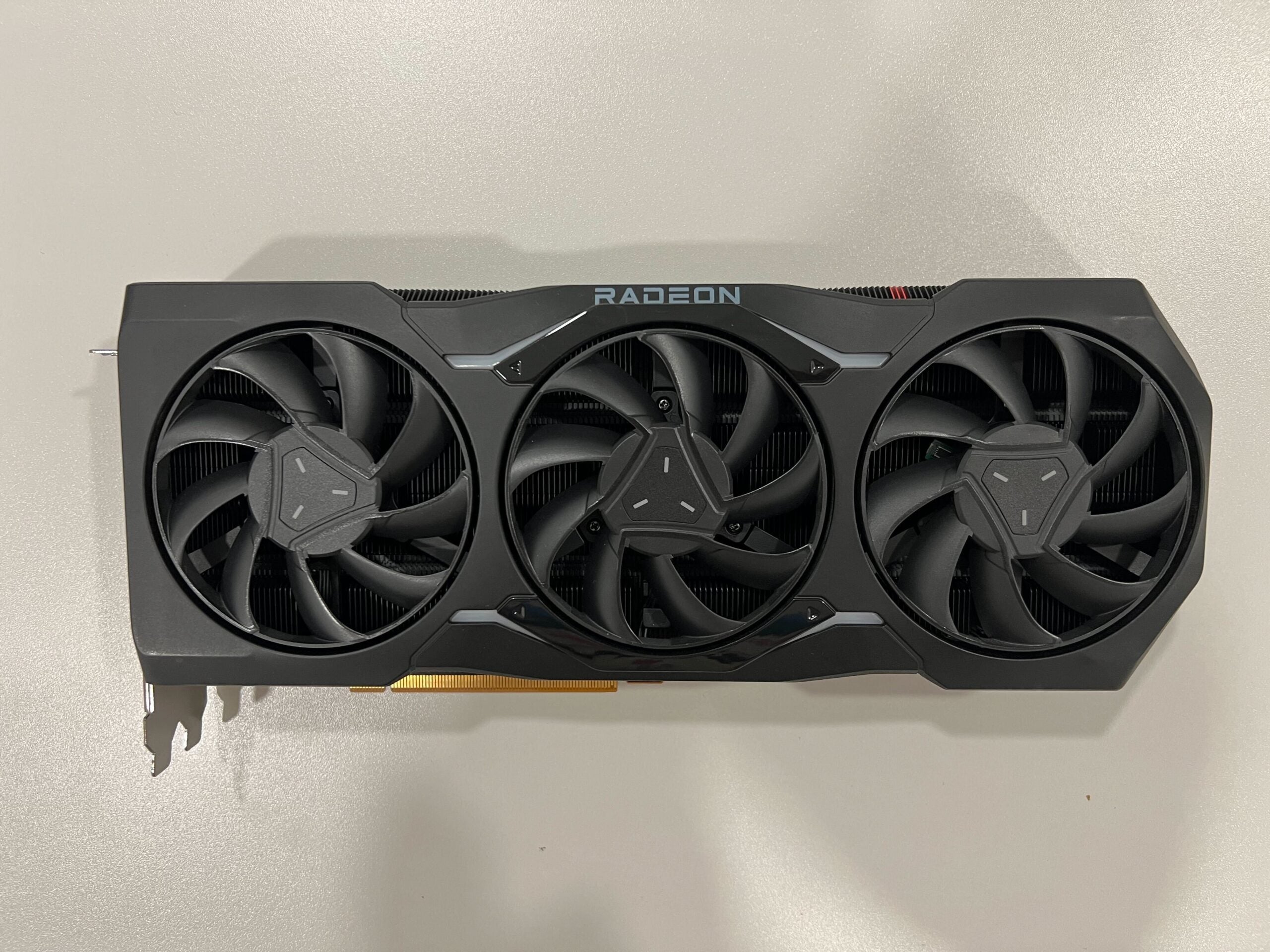Best Graphics Card 2024: Top GPUs for every budget

The GPU is the single most important component for gaming, and is very important for content creation too. But which is the best graphics card you can buy for your specific needs?
We’ve created this guide to help you find the best graphics card option, with our team of experts reviewing all of the latest cards from the likes of AMD, Nvidia and Intel.
During our testing, we make sure to use industry-standard benchmarks, as well as using popular modern games to determine the average performance. We then compare all of the results to find which graphics cards represent the best value for your money. The top rated cards are picked for this very list, making it easier for you to come to a final decision.
We also make sure to evaluate other areas, such as the power consumption of each card, and the available features such as ray tracing, DLSS and more.
If you’re loyal to a specific brand, it’s also worth checking out our Best Nvidia Graphics Card roundup. And if you’re looking to upgrade your PC in other areas, then have a look at our Best Gaming CPU guide. Otherwise, check out our best graphics card recommendations below.
Best graphics cards at a glance
- Best overall graphics card: AMD Radeon RX 7900 XT – check price
- Best value for 4k gaming: Nvidia GeForce RTX 4070 Super – check price
- Best value for 1440p: AMD Radeon RX 7800 XT – check price
- Best value for 1080p: Nvidia RTX 3060 Ti – check price
- Best on a budget: AMD Radeon RX 7600 – check price
- Most powerful: Nvidia GeForce RTX 4090 – check price
How we test
Every graphics card we review goes through a series of uniform checks designed to gauge key things including performance, features, thermals, power consumption and overclockability.
These include formal synthetic benchmarks with third-party software, plus a series of in-games tests from some of the most recent AAA PC titles, with optimised picks for both AMD and Nvidia.
We also make sure to use the GPU for everyday tasks and gaming to make sure there are no real-time performance issues.
- Solid 1080p Ray Tracing performance
- Lowest power consumption of all Ampere cards
- Cheapest current gen’ card on the market
- Still not massively overclockable
- Only 20% cheaper than an RTX 3070
- Most powerful graphics card yet
- Incredible 4K gaming performance
- DLSS 3 offers substantial boost
- Superb option for content creators
- Absurdly high price
- Overkill for most games, even in 4K
- Very high power consumption
- Impressive performance at 4K and 1440p
- Super clean design, and compact form-factor
- Impressively cool under-load
- Ray-Tracing and DLSS performance shine
- Not a huge leap in performance compared to the RTX 4070
- Not all games support Ray tracing or DLSS
- Fantastic gaming power
- Reliable 4K performance
- Good support for ray tracing
- More than powerful enough for creatives
- High price
- Overkill for a lot of games
- Nvidia still has the edge with ray tracing and DLSS
- Average 4K framerates above 60
- Good overall pricing
- 16GB of VRAM should give it longevity
- Not quite as potent as RTX 4070 Super
- Ray tracing still lags behind Nvidia
- Solid at 1080p and 1440p
- Incredible price to performance
- 8GB of VRAM is plenty
- Acer’s cooler design needs an upgrade
- Limited VRAM can hinder 4K performance

AMD Radeon RX 7900 XT
Best overall graphics card
Pros
- Fantastic gaming power
- Reliable 4K performance
- Good support for ray tracing
- More than powerful enough for creatives
Cons
- High price
- Overkill for a lot of games
- Nvidia still has the edge with ray tracing and DLSS
The AMD Radeon RX 7900 XT is the best graphics card we’ve reviewed, striking a sweet balance between price and performance for those who want to play in 4K.
Our benchmark results with this card were highly impressive. With the highest graphics preset setting and resolution cranked up to 4K, the RX 7900 XT was able to hit 99fps in Horizon Zero Dawn, 90fps in Borderlands 3 and 56fps in CyberPunk 2077. What’s more, the card supports ray tracing for high fidelity visuals, and the use of FSR 2 provides a welcome boost to performance.
Nvidia clearly still has the edge when it comes to AI performance boosting however, with DLSS 3.5 able to provide a far greater uplift, while also seeing improvements made to the ray tracing quality. But since such technology is limited to a modest selection of games, we still feel that the AMD Radeon RX 7900 XT is the more appealing option for the vast majority of gamers.
If you want an even better 4K performance, then it’s worth checking out the slightly more expensive AMD Radeon RX 7900 XTX too, which also saw a glowing review. Otherwise, we feel that the AMD Radeon RX 7900 XT offers up the best balance of price and power.
Reviewer: Gemma Ryles
Full Review: AMD Radeon RX 7900 XT review

Nvidia GeForce RTX 4070 Super
Best value 4K graphics card
Pros
- Impressive performance at 4K and 1440p
- Super clean design, and compact form-factor
- Impressively cool under-load
- Ray-Tracing and DLSS performance shine
Cons
- Not a huge leap in performance compared to the RTX 4070
- Not all games support Ray tracing or DLSS
Halfway through a graphics card cycle, Nvidia has a habit of launching the Super series, which offer boosted specs on existing cards to eke out every single drop of performance. This approach can be hit and miss, but the Nvidia GeForce RTX 4070 Super has been a resounding success.
At a very reasonable price, the Nvidia RTX 4070 Super is capable of an entry-level 4K performance, achieving 84fps on Horizon Zero Dawn and 62fps on Borderlands 3. Activating ray tracing for CyberPunk 2077 does highlight the card’s limitations though, mustering just 16fps on average. That said, making use of the excellent DLSS technology does boost the performance to make ray tracing possible at such high resolutions.
While 4K is absolutely possible here, the RTX 4070 Super truly shines at 1440p resolutions, as it frequently surpassed the 100fps mark in our tests for a variety of games. What’s more, the card is impressively power efficient, with a similar power draw to the less powerful RTX 4070 card of which it’s based on.
For those happy to spend a little bit more for extra power, then the Nvidia GeForce RTX 4070 Ti Super is worth checking out. Nevertheless, we feel that the Nvidia GeForce RTX 4070 Super remains the best value graphics card you can currently buy.
Reviewer: Zak Storey
Full Review: Nvidia GeForce RTX 4070 Super review

AMD Radeon RX 7800 XT
Best value 1440p graphics card
Pros
- Average 4K framerates above 60
- Good overall pricing
- 16GB of VRAM should give it longevity
Cons
- Not quite as potent as RTX 4070 Super
- Ray tracing still lags behind Nvidia
If you’re looking for the best graphics card for a 1440p gaming performance, but don’t want to spend over the odds, then the AMD Radeon RX 7800 XT is your best bet.
According to our 1440p tests, AMD’s mid-range card was able to play Horizon Zero Dawn at 137fps, Borderlands 3 at 130fps and Red Dead Redemption II at 106fps. These are all remarkable speeds, especially for a graphics card that priced at just $499 at launch.
This card does have some limitations, as running Cyberpunk 2077 in 1440p with ray tracing activated sees the performance fall down to 27fps. For such use cases, the Nvidia RTX 4070 Super is a more tempting option, as it’s able to run Cyberpunk at 43fps with the same settings, while the use of DLSS boosts the performance even further.
If you’re not too fussed about ray tracing though, then we think the AMD Radeon RX 7800 XT is a fantastic graphics card choice, representing outstanding value for money.
Reviewer: Zak Storey
Full Review: AMD Radeon RX 7800 XT review
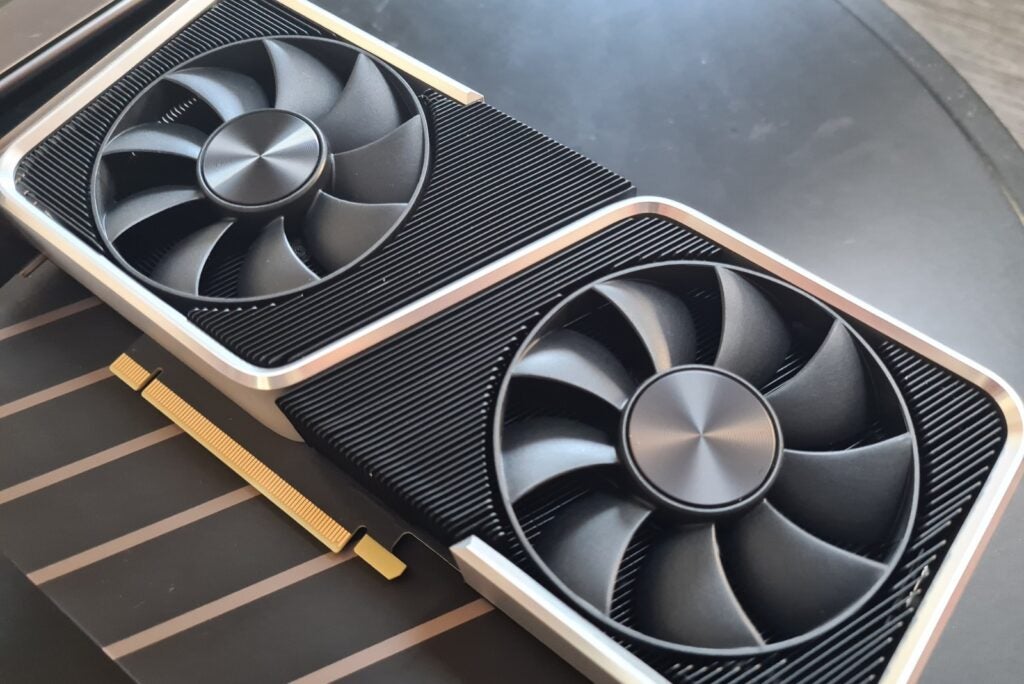
Nvidia RTX 3060 Ti
Best value 1080p graphics card
Pros
- Solid 1080p Ray Tracing performance
- Lowest power consumption of all Ampere cards
- Cheapest current gen’ card on the market
Cons
- Still not massively overclockable
- Only 20% cheaper than an RTX 3070
If you still use an 1080p gaming monitor, then most of the RTX 4000 cards are overkill options based on our experience, or simply don’t offer great value. Instead, we recommend opting for last generation’s RTX 3060 Ti. This is one of the cheapest cards that we’ve benchmarked to offer reliable post-60fps performance with ray tracing on in 1080p.
The graphics card ran every game in our tests, even with ray tracing activated and their graphics settings maxed out. At 1080p, Control zoomed along at 84fps and Borderlands 3 never dipped below 60fps. As a result, we’d say this is the card to get if you care about ray tracing at a 1080p resolution.
Nvidia has since launched the RTX 4060 Ti graphics card, which packs upgraded ray tracing and DLSS performance. However, its raw performance is almost identical to the more affordable RTX 3060 Ti card, making the latter a better value proposition.
Reviewer: Alastair Stevenson
Full review: Nvidia RTX 3060 Ti review
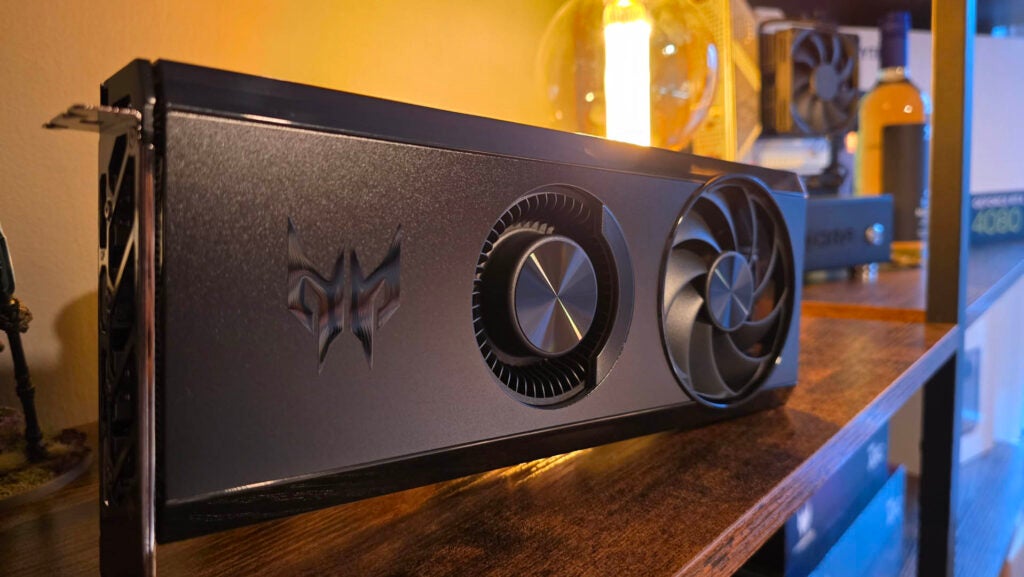
AMD Radeon RX 7600
Best budget graphics card
Pros
- Solid at 1080p and 1440p
- Incredible price to performance
- 8GB of VRAM is plenty
Cons
- Acer’s cooler design needs an upgrade
- Limited VRAM can hinder 4K performance
Let’s be honest, the biggest issue with PC gaming is the cost of updating all of your components. A graphics card can cost more than a PS5 console after all. This is why we’re such a big fan of the AMD Radeon RX 7600, which offers fantastic performance at an affordable price.
When testing the budget card in 1080p, it was able to run Horizon Zero Dawn at 122fps, Borderlands 3 at 114fps and Red Dead Redemption 2 at 76fps. That said, the card can sometimes struggle with demanding games, as we found it to fall as low as 6fps when testing Red Dead Redemption. These were just minor hiccups, but it does show the AMD card doesn’t offer quite as smooth of a performance as pricier alternatives.
Ray tracing is basically a no go here too, as running Cyberpunk 2077 in 1080 with ray tracing activated saw the performance plummet to 11fps which isn’t playable.
But if you accept this graphics card’s shortcomings, it still delivers a great Full HD performance that should satisfy the vast majority of gamers. If you’re on a strict budget, then this is the best graphics card to go for.
Reviewer: Zak Storey
Full Review: AMD Radeon RX 7600 review

Nvidia GeForce RTX 4090
Most powerful graphics card
Pros
- Most powerful graphics card yet
- Incredible 4K gaming performance
- DLSS 3 offers substantial boost
- Superb option for content creators
Cons
- Absurdly high price
- Overkill for most games, even in 4K
- Very high power consumption
The Nvidia GeForce RTX 4090 was the very first graphics card to launch from the new RTX 4000 Series, and it’s also the most powerful GPU we’ve ever tested.
In the vast majority of games we tested, it was capable of hitting over 100fps at a 4K resolution. It’s even more impressive for eSports games such as Overwatch 2, as it nearly reached a 500fps performance. You can’t get these kinds of speeds anywhere else.
We also found that the DLSS 3 software helps to boost frame rates even further for compatible games, allowing for a smoother performance in Cyberpunk 2077 when set to a 4K resolution with ray tracing activated. And while the RTX 4090 is arguably overkill for most gamers, it’s a fantastic option for content creators that need to render 3D models at a lightning pace.
The RTX 4090 won’t be for everyone since it costs an absolute fortune and also has a high power consumption to boot. But if you’re craving the fastest performance possible from a graphics card, then this is your very best option.
Reviewer: Ryan Jones
Full review: Nvidia GeForce RTX 4090 review
FAQs
Ray tracing is an advanced rendering technology that can create realistic lighting and shadow effects. Only modern GPUs and select games support this technology.
DLSS is Nvidia’s temporal image upscaling technology which boosts the frame rate performance of supported games without compromising on the image quality. Only Nvidia’s RTX 20-Series, 30-Series and 40-Series GPUs support the technology.



